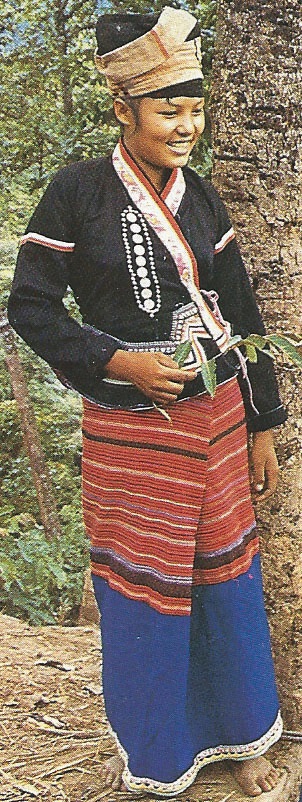|
Read 13197822 times
Connect me to:
|
Blang: Are Bulang PeopleChinese Ethnic Minorities and Their Foods
Summer Volume: 2017 Issue: 24(2) page(s): 31
Early ancestors of this minority population whose
name means ‘mountain people’ to some, are the
ancient Pu or Po tribal folk. During the Tang
Dynasty (618 - 907 CE), they were called Pozimen or
Puman people who lived in Xishuangbanna. Some
also lived in the Lancang, Yongde, Changning, and
Mojiang counties of Yunnan Province.
Some also lived in Burma and Thailand.
This population has other names. Lesser
numbers of them live in other places
including the Blang, Bada, Menghai, and
Xiding counties and the Dalou mountains. Most of these people are farmers who grow
sugar cane, rice, corn, beans, buckwheat,
potatoes, and tea, the latter they
fermented burying it for several months in
bamboo tubes. When they took it out it
had the sour taste they love. Incidentally,
they cook most of their dishes with a sour
taste, too.

They also grow cotton, and they eat their
rice with their hands, most of their other
foods with chopsticks. These Blang people
are related to Dai, Khmer, and Va people,
and many of their foods are similar to
those of these populations, but made with
sour tastes. They love bamboo shoots and
eat lots of them, and lots if fish, too, and
they have pu-re tea mostly between meals.
For their main meals, they eat meat and
vegetables. For beauty, many Blang women blacken their teeth
with betel nuts, pierce their ears putting fresh flowers
in them, and chew either betel nuts or tea leaves or
both. They name their babies three days after giving
birth, use the mother’s name as the child’s first name;
and very few use the father’s name first, last, or even
as the child’s middle name. When a Blang person dies, they want a chicken killed to
call back their soul, and want to be buried with two mugs,
one filled with tea, the other with wine. They also want
their relatives to place a candle at each corner of their
coffin to light their way to the afterlife, and want to be
buried with food. What they do not want is a tombstone
or any marker of where they are buried. They believe
those who should, already know the location, and all
others do not need to know where they are interred. Blang people build and live in two-story houses,
most made of bamboo. Their ground floor is for their
animals; they live above them. The community often
helps build a new house and when done,
they celebrate singing and dancing. That is
similar to what they do on most holidays. Most Blang people are physically small
with a typical male weighing about one
hundred twenty-five pounds. They are
rarely taller than five foot five; most of
their women are shorter by about five
inches. They rarely weigh as much as their
men do. Their women dress in black or dark blue
jackets, some embroider them. Their skirts
can be of similar color or lighter blue with
striped fabric at their top. These are often
simply fabric wrapped around their lower
torso that resembles skirts. These women,
on their head, wear a turban made with
or without striped fabric. A few can be
embroidered. Young men wear dark hats,
some women dark aprons often edged
with striped fabric. Some embroider the
tops of their outfits. Recent census about this minority
group shows them numbering less than
one hundred thousand. They love their acidic foods
wrapped in leaves, and cooked with lemons or another
sour ingredient. Their main vegetable is cabbage and
they eat lots of it with dishes of fish, shrimp, crabs, pork,
beef, chicken, or small game. Beside liking sour foods,
many do add some piquancy. What they rarely eat are
foods that are just savory. This ethnicity celebrates most life-cycle events with
dances and when doing them, they hold a sword or stick
as do many Dai people. Their most important holidays
include Chinese New Year and an Open and Close Door
Festival. Blang have a God worship service, but when we
know not. They also have one called ‘Washing the Ox
Foot.’ If you know about it or more about them, please
share and we will share it with our readers. |


